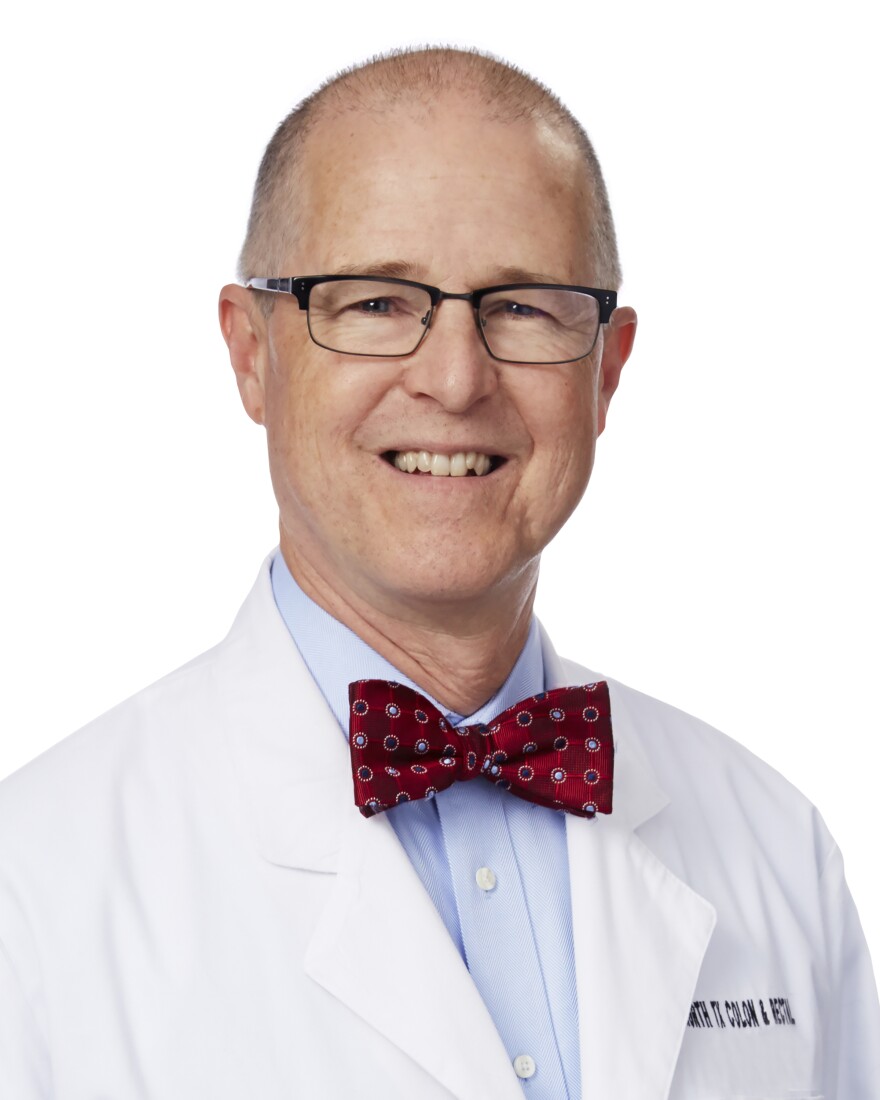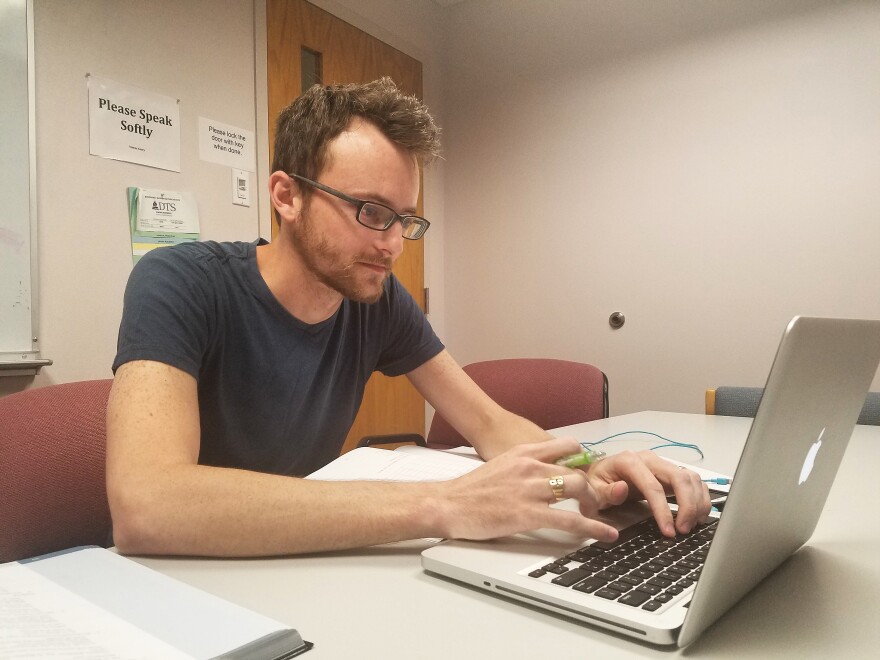President Trump called the opioid crisis in the United States a national emergency last week, and Texas has joined a coalition of states to investigate the role pharmaceutical companies have played in creating and prolonging the epidemic.
Most experts agree, though, the opioid problem is the result of a confluence of factors – and some doctors are scrutinizing the part they played as well, debating the need to prescribe opioids at all. They say rethinking how patients recover from surgery might help curb a national drug crisis.
Enhanced recovery after surgery
Heroin use has skyrocketed fivefold in the past decade, and many health and addiction experts attribute that surge to the lax prescription of pharmaceutical opioids like hydromorphone, oxycodone and morphine. They also go by their brand names like Dilaudid, Percocet, Oxycontin and Norco.
“These are the drugs that patients may start on for legitimate reasons, but [they] continue taking those drugs long term and develop a drug addiction problem,” said Dr. Walter Peters, chief of colorectal surgery at Baylor University Medical Center in Dallas.
According to a CDC report from March of this year, the transition from an initial prescription to chronic use of pharmaceuticals or illegal drugs like heroin can happen very quickly. Even a one-day opioid prescription carries a 6 percent risk of use a year later. That’s why more doctors, like Peters, are working to prescribe opioids – also called narcotics – more responsibly.
At Baylor, he helped usher in what the medical field calls Enhanced Recovery After Surgery.
“It’s a series of interventions that are designed to reduce the physical and psychological impact of surgery for our patients,” Peters said.
Before surgery, doctors provide education and try to control recovery expectations that patients may have. They emphasize regular eating, early movement and less dependency on narcotics after surgery.
Enhanced recovery programs originated in Europe around the turn of the century and have recently gained traction in American hospitals. Baylor began its program a year ago and has extensively studied its outcomes. The primary goals were to shorten the average hospital stay, reduce costs and help patients recover faster after surgery.

“What we were somewhat pleasantly surprised to learn was that our enhanced recovery program also resulted in a substantial reduction in the number of narcotic prescriptions we had to write and the amount of opioid drugs our patients were taking to control their pain,” Peters said.
Prescribing for pain
About a year into the program, narcotic use among patients recovering from colorectal surgery at Baylor is about 50 percent of what it was before. He expects that number to improve as enhanced recovery protocols expand to other surgical departments in the hospital.
Emily Saeler is the colorectal outcomes manager, who gathered this data through Baylor’s pharmacy.
“We actually looked at it within the first 24 hours. How much did they get in the OR, how much did they get in the [post-anesthesia care unit]. And then if they went to the floor within 24 hours, how much did they get prescribed on the floor?” Saeler said. “And then we looked at up to post-op Day One and then their entire stay. And then we just compared. Is it more or less? Do we need to give them as much as we’re giving them? That’s not what we saw.”
They also saw another interesting trend.
“During this time period, our patient satisfaction scores with regard to pain control have remained stable,” Dr. Peters said.
That’s a significant discovery, he said, given that conventional pain management with opioids was a direct result from conditions in the 1990s, when there was a push for doctors to take pain more seriously – to treat it like a vital sign, as if it was as important as blood pressure and pulse rate.
As a result, doctors felt pressure to prescribe more powerful painkillers. But nearly 20 years later, the CDC reports people are taking four times as many prescription opioids as they did in 1999. Peters said enhanced recovery is tempering that trend, and employing painkillers most people already have at home: Advil, Motrin and Tylenol. That’s what 28-year-old Matthew Peterson was given after his surgery in May, when he had 11 inches of his small intestine removed to treat his Crohn’s disease.

“I was kind of expecting something stronger, but I ended up feeling good enough where I was just on Tylenol the rest of the time – like the max amount of Tylenol that I could for I think two days.”
Peterson said back in college, he got hydrocodone, a prescription opioid, after breaking his leg. And he remembers a stark difference in his recovery. On hydrocodone, he felt hazy, groggy and sick. He didn’t have the energy to move, eat or talk. On Tylenol, he said he definitely felt more alert.
“There were nurses that would come in, and we’d spend a good chunk of our day having full-blown conversations while I was in recovery at the hospital,” Peterson said. “I felt more with it, and together and able to communicate and a whole lot better.”
As part of the enhanced recovery program, doctors had him up and walking the day of his surgery, and he was out of the hospital two days later. Peterson said he learned a lot about his body and how much pain he could actually tolerate. Sure, it might have been easier initially to pop a fast-acting opioid, he said, but he’s glad he could avoid more serious complications down the road – like addiction.
Opioids as a last resort
Prescription and illegal opioids have accounted for more than 60 percent of overdose deaths in the U.S., and the CDC reports more than 33,000 people died from opioid overdoses in 2015. That same year, Texas saw nearly 1,200 opioid-related deaths.
But not everyone is like Matthew Peterson – and not everyone who uses prescription opioids becomes addicted. Some in the medical community fear cutting patients off from needed prescriptions would hardly solve the opioid crisis and would make them suffer for no reason.
The current CDC guidelines say opioids should only be prescribed after considering other drugs and other treatments that don't involve drugs. If a doctor does have to prescribe opioids, they should discuss the risks and likely benefits with the patient and start with low doses and shorter durations. These guidelines, during public comment in 2015, faced sharp criticism.
Dr. Jayne Ballantyne advised the CDC on these guidelines. She’s a professor at the University of Washington and is president of PROP, Physicians for Responsible Opioid Prescribing. The group advocates caution in prescribing opioids, which they believe are often essential for easing suffering at the end of life – but are not the solution for every type of pain.
“There were decades where everybody believed so strongly that the only reasonable pain treatment were opiates, that they lost touch with the fact that some of these other analgesics are very effective after surgery,” Ballantyne said.
She said though opiates can be necessary for some, they often rob people of other safe options.
“The complex pain, the kind of pain that’s very distressing and destroys peoples’ lives, that sort of pain needs intensive, multi-disciplinary pain treatment – including psychological treatments and physical treatments. It’s very labor-intensive and expensive, but that’s the only thing that works.”
Baylor’s Dr. Walter Peters said pain treatment is not one-size-fits-all; it’s all about managing expectations.
“Our expectations is not that we can provide pain-free surgery. That just doesn’t exist, but we have to explain that we want to control their pain to where it’s manageable,” he said “We’re not cruel. We don’t want people to suffer, and for some patients there is no other way than to give narcotics, to give opioids. So we haven’t completely banned the use or eliminated the use of narcotics.”
Rather, the push these days is for doctors to see opioids as a last resort.





